Are our designer handbags really worth what we pay? One man has made it his mission to find out and let us know. And be warned, you might not be happy with his answers.
The viral TikTok (and IG) star known by the apropos appellation Tanner Leatherstein has captured the attention of the luxury handbag world. Leatherstein, whose real name is Volkan Yilmaz, literally takes apart items from our favorite brands and assesses their value, based primarily on raw materials and labor costs. As part of this, Leatherstein discusses the quality of materials used which can vary greatly between and among the top brands and their product. What he does not do is put a value on the status of carrying a designer brand, leaving it to all of us to decide just how much is in a name.
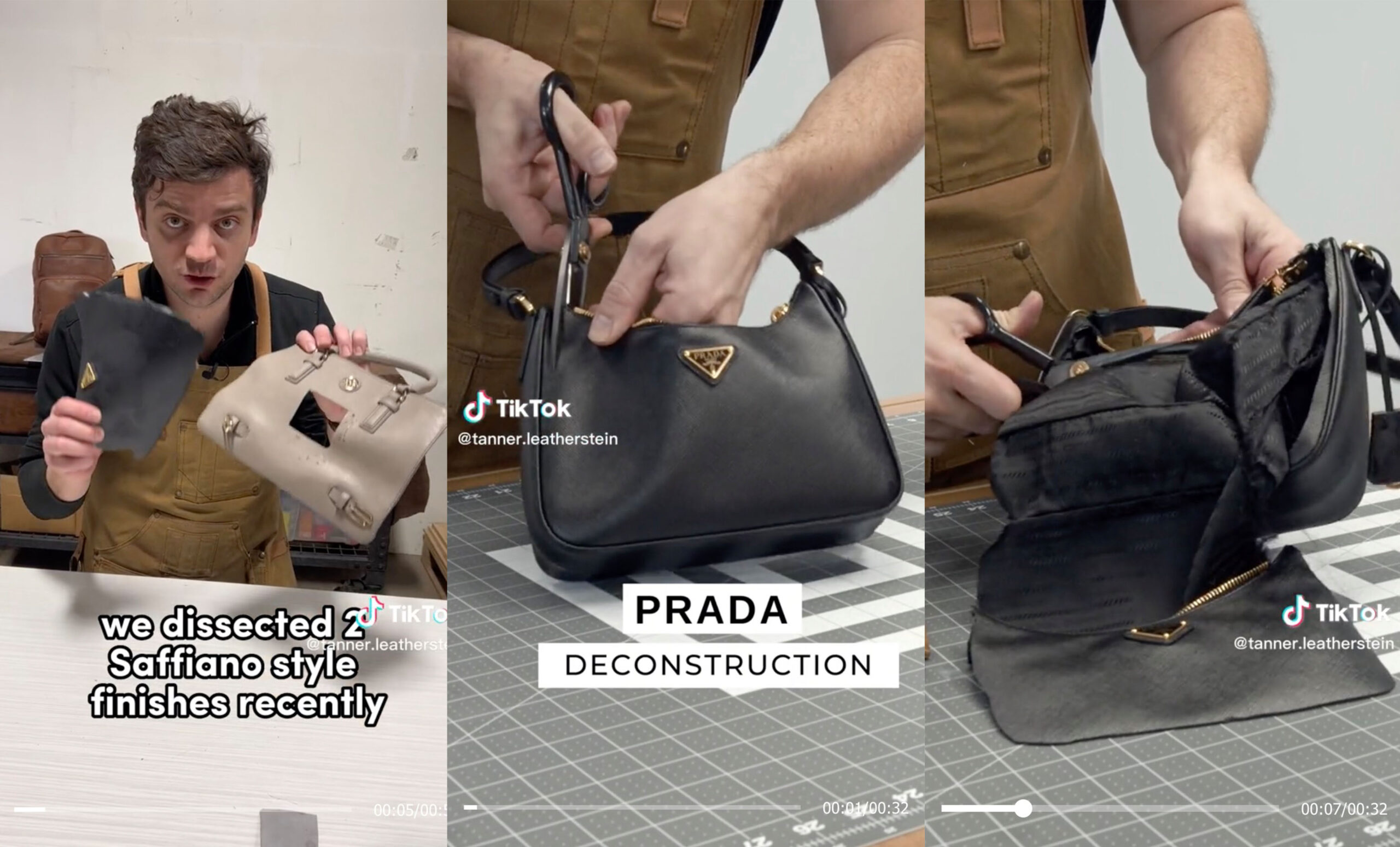
Tanner Leatherstein. Image Credit: 1granary
Chanel
Many of his revelations shocked the PurseBop team. Take the favored Chanel Caviar leather, so many of us know, love, and prefer. Well, Leatherstein compared the quality of this leather, in this case on a Chanel zipped wallet, to a basketball! Eek. No slam dunk for this Chanel on this breakdown. But, as you’ll read below, Leatherstein is a fan of Chanel’s lambskin.
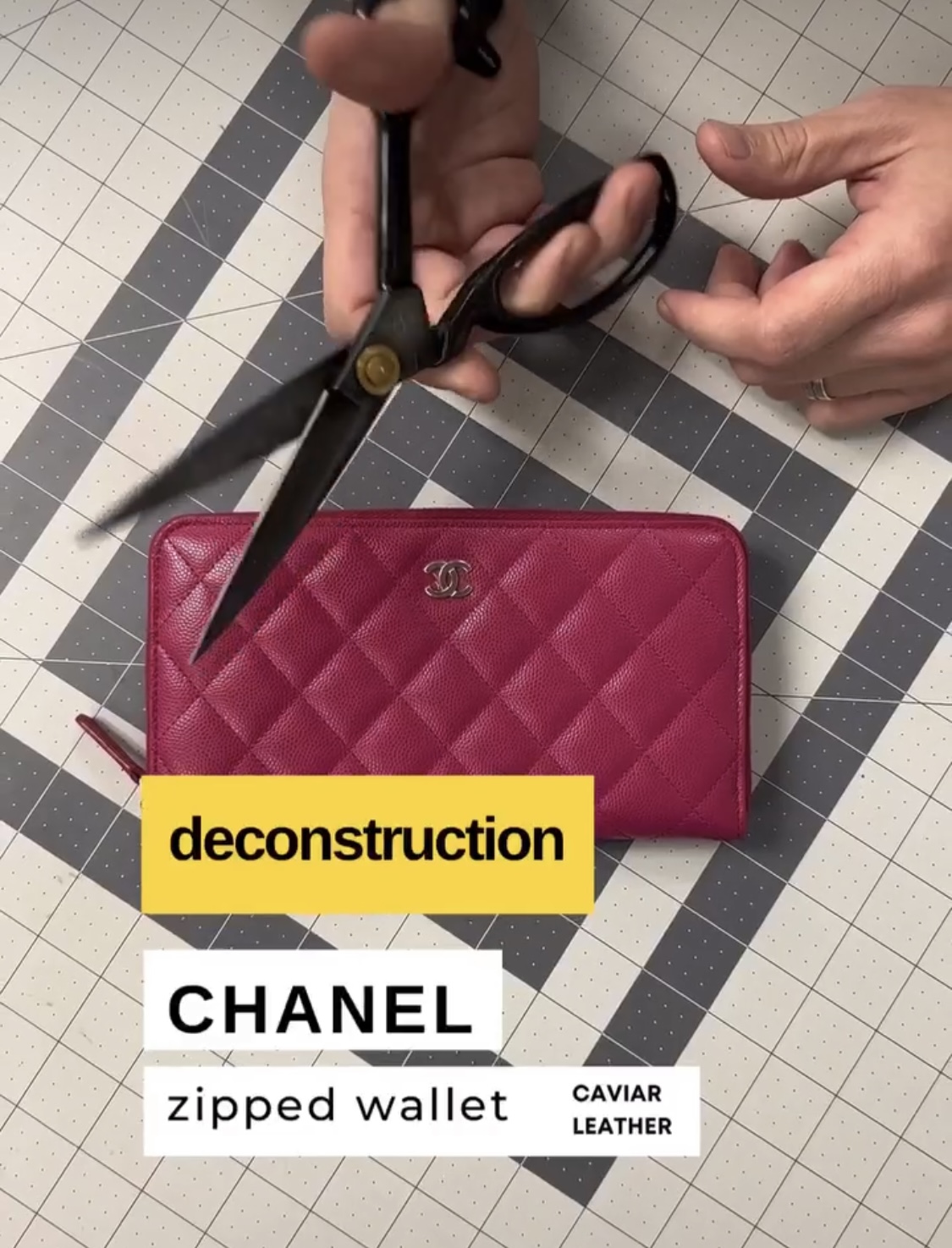
Deconstruction of a Chanel Wallet. Image Credit: @tanner.leatherstein
Chanel Caviar Zipped Wallet
Leather cost: $30
Labor: $50
Accessories: $10
Total: $90
RETAIL: $1,375
Put differently, based on his assessment, 94% of the value of that wallet is in the Chanel brand, marketing, and the like. Not in the leather or hardware.
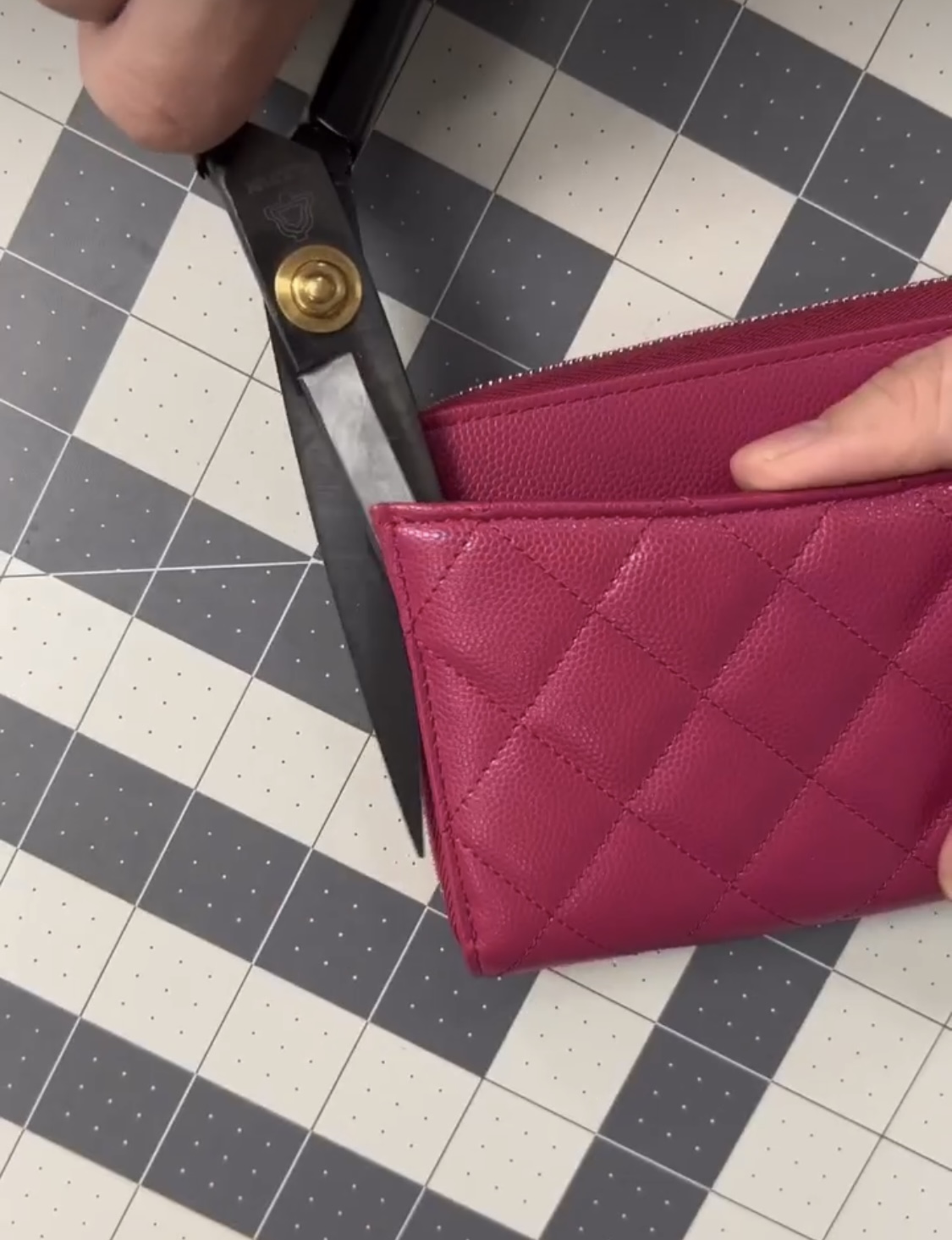
Deconstructing a Chanel Wallet. Image Credit: @tanner.leatherstein
Louis Vuitton

Deconstruction Louis Vuitton. Image Credit: @tanner.leatherstein
In another example, Leatherstein tackled Louis Vuitton Epi Leather, this time in a Félicie Pochette. Similar to the Chanel Caviar, he valued the raw materials and labor at only about 7% of the cost; 93% of what we pay is for the name, status and experience.
Louis Vuitton Félicie Pochette Epi Leather
Leather cost: $25
Support Materials/Labor: $85
Total: $110
RETAIL: $1,620
@tanner.leatherstein I got the Hermes Evelyn. #hermes #hermesbag #hermesevelyne #hermesunboxing #hermesgame #hermestok #leather #leathertok #leatherexpert #tannerleatherstein #luxurybag #luxurytok #bagtok #bagtiktok #baglover #bagcollection #hermesaddict #fashiontok #bagunboxing #luxuryfashion #fashiononabudget #fashiontiktok #handbag #handbagtiktok #pursetok #luxuryshopping #bagfashion
Hermès
With Hermès, Leatherstein looked at a Calvi Card holder. While it fared better than the above two, as 12% of cost was ascribed to production, his results still meant that 88% of what is paid, is for the perceived value.
Hermes Calvi Card Holder
Leather cost: $20
Support Materials/Labor: $30
Total: $50
RETAIL: $430
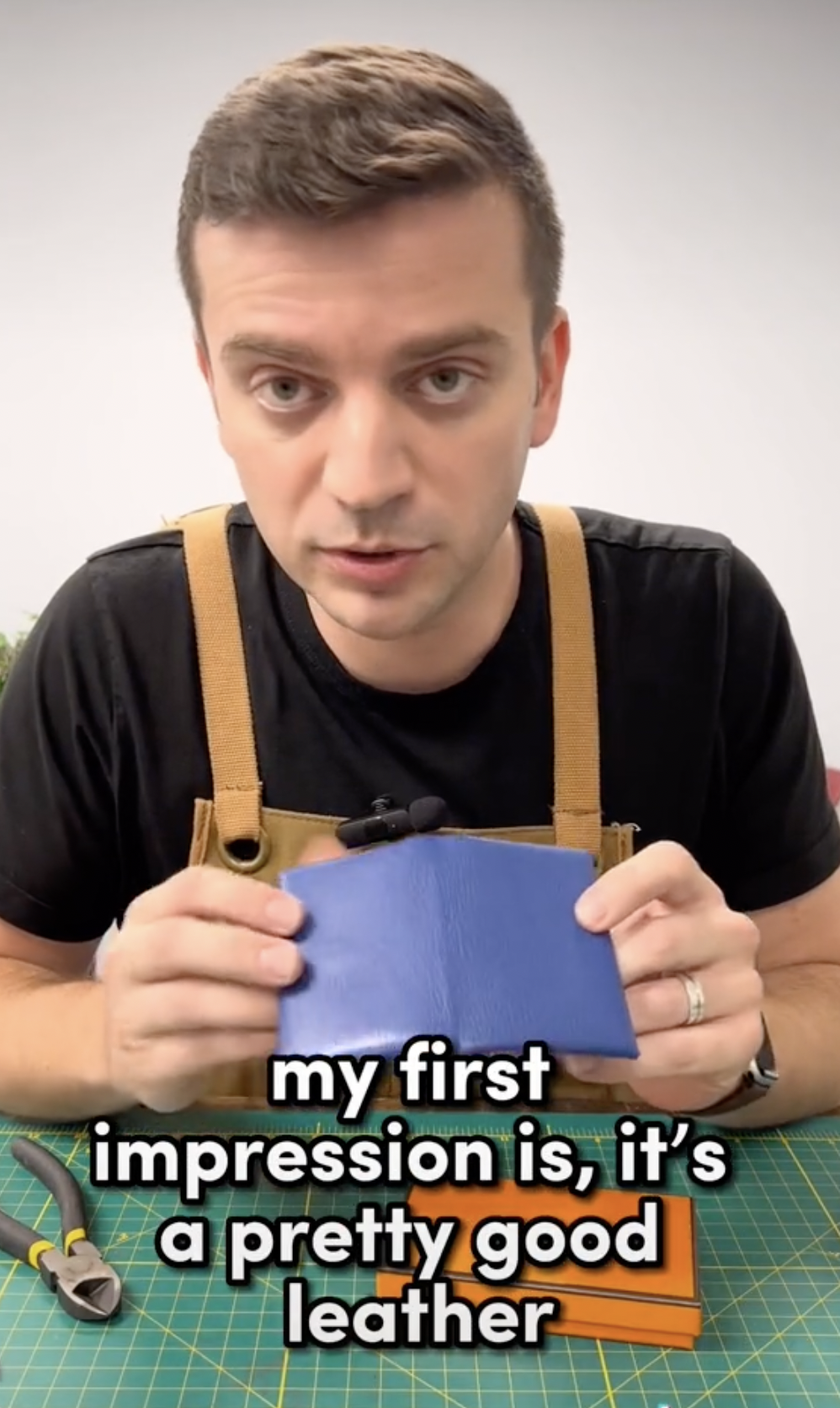
Image Credit: @tanner.leatherstein
To be fair, however, we note that thus far Leatherstein’s examinations are on small leather goods. It is possible that the larger and more expensive items receive a higher level of materials. In any event, it’s all good to know.
PurseBop reached out to Leatherstein to learn more about him, why he is doing this, and some perhaps surprising product recommendations. Join us in getting to know Leatherstein aka Volkan.
- Could you please tell us about yourself? How did you get your start in Türkiye?
I was born into a family-owned tannery and since childhood, I was involved in the family business running after the technicians in the tannery, trying to learn the chemistry of the work. It originally started as a game and it turned into a lifetime passion. My main expertise is in the tanning of leather. I have done sheep skins, goat skins, and cow hides production in my tannery experience before moving to the United States. And that’s how I get involved in leather in Türkiye.
- Your family brand is Pegai. Which Pegai bag is your favorite?
I have two favorites in our bag categories. For the women’s bag category, my favorite one is our Hampton bag. It’s a very classic crossbody bag. We make them in a variety of different leathers: Italian vegetable tanned, some of our classics such as cowhide, full grain leathers, and now we’re adding a special addition which is lamb skin a leather internal lining made from calfskin. So that’s my favorite bag in the women’s category. In the men’s category (which is actually more of a unisex design) is Buddy, the crossbody sling bag. I use it on a daily basis and it’s definitely now my favorite bag to carry around with me since it carries all my essentials.
- Which luxury brand uses the most similar high-quality leather as Pegai?
I think that wouldn’t be a very fair comparison to the leathers I use with the luxury brands because we kind of play in different segments of this market. Usually, those luxury brands are global and they are making production on a mass scale. They need some form of standardization, which requires a quite heavy finish (in my opinion) in leathers, and that’s not what I use in Pegai because I have the luxury of using these artisan and natural authentic, minimally-finished leathers. And that’s exactly the promise of Pegai. I would like to apply these artisanal leathers that high-end luxury brands don’t have the luxury to use because these leathers are kind of rare and unique which makes every product look slightly different, which doesn’t fit a global business model. And I apply those leathers into complex sophisticated designs as luxury brands can do but some of the small shops are not capable of doing. So, Pegai is kind of bridging the gap between those luxury brands that cannot use artisan leathers and the small artisans that love these natural leathers but cannot apply a sophisticated design to those leathers. So it’s kind of like an uncommon blend in that space. That would be my most fair answer here.
- Why did you start deconstructing leather goods?
About two years ago, it was just an instinct when I was first visiting a Louis Vuitton store. I was really curious about what was behind these leather bags that are super expensive. I wanted to understand how it is made and what kind of leather was involved since this is not public knowledge and they really don’t share that much information about these things. Probably the only thing I figured I can do is just buy one and take it apart to understand it myself and maybe make a video to help people understand what’s going on behind those high price tags. That was the starting point idea.
- PurseBop specializes in writing about über-lux brands, like Hermès, Chanel, Dior and Louis Vuitton, which of these brands uses the highest quality goods and why?
In my opinion, I think Hermes definitely uses the most artistic leathers in that category or brands you gave in the super luxury brand categories. The leather finishes they used are definitely standardized to a point, but it is still respectful of the nature of leather. We can still see the variations and we can still appreciate the leather grain. So I have a big respect for Hermes leather selections. I love their Chevre leather, Togo, and Clemence. But some of the leathers they used do not fit this description like Epsom leather. Epsom is heavily finished, so it’s not my favorite.
For Chanel, I have deconstructed their caviar leather. It’s very heavily finished which does not appeal to my taste. I believe it just takes our senses away from the leather experience and the feeling of that natural leather material. But I like their lambskin selections. That’s definitely my go-to choice if it’s a Chanel product we’re talking about.
Louis Vuitton still uses pretty much very generic, standardized leathers. Most of their leather is good quality but heavily finished. There’s not much to enjoy from a leather artisan standpoint, I think. It is good quality but not that special of leather in my opinion. For Dior, I don’t have much experience with the brand yet.
Definitely, Hermes is leading the pack over these mentioned brands.
- We’ve seen the Hermès Calvi card deconstruction. Have you been able to get a Hermès bag yet to deconstruct?
Yes, we just got a Hermes Evelyn 16 from The Real Real. It was a used bag and we’re going to investigate that one in the next few weeks.
- You ranked the Bottega Veneta leather very highly. How does this compare to Hermès leather?
Yes, most of the Bottega products I’ve looked at so far were a very nice selection. Even though they are standardized, it was at a minimal level for a brand of their size which I think was very respectful for the leather. So I have a good respect for Bottega’s sheepskin selections and some of the calfskin selections.
But one of the wallets I deconstructed from Bottega was quite misleading. It was covered with a film layer which can be considered genuine leather, a plastic film applied on a split suede to make it look like grain again and it was described as calfskin on the website. So to me, that was very disappointing. That kind of made me think you can’t really rely on one brand for all their other selections. Sometimes they make different decisions.
As to how Bottega compares to Hermes, I think they’re pretty similar. They have a good respect for minimally finished leathers considering their level of mass production and standardization process. I think Bottega doesn’t play too much with cows in my experience so far. They’re more in the sheepskin category for a lot of woven designs, but even their calfskins are pretty good. While Hermes uses a lot of nice goat skins, their Chevre, Togo, and Clemence, which are their signature leathers, are pretty good. Both are very, very equally good in my opinion.
- Although Chanel caviar leather is more desirable over lambskin, is the leather quality better?
We have deconstructed a caviar leather zippered wallet from Chanel. It’s not my favorite because of the very heavy finish on that caviar product. But there are advantages to that. Since it’s a very heavy finish, it protects the leather from the outside elements so it’s pretty water-resistant. It can be cleaned easily and it’s not going to scratch. It will look pretty new for a long time. But eventually, it will get old since all the heavy finishes are plastic and they end up getting old after a certain point.
I think lambskin is a lot more natural choice, but it requires a little bit more careful usage because it’s gonna be more delicate. It will scratch easily or it may even rip easily since lambskin is a lot thinner and more flexible than cowhides. I think it’s your choice. If you really want to enjoy the touch and look of the leather, lambskin is a lot more natural and authentic. But if you wanted something that looks polished and clean all the time, probably Caviar leather is the better recommendation for you.
- Have you come to believe that luxury bags are worth paying for?
This depends on the user and what they’re trying to do with it. All these luxury bags are all about the prestige and status they represent by the brand. The engineered luxury around that logo is what they’re selling to you at those high price points. It’s never about the leather. If you don’t care about that piece, they’re definitely not worth paying because you will be able to find something very comparable (maybe even higher quality) in the market from upcoming brands at 1/5 or 1/10 of the price sometimes. But if you’re in the status game, then definitely it’s worth it because no other brands can give you that.
- Are there any surprise brands with amazing quality?
Yes. These brands are ever-increasing in quantity and are coming into the market every day because there is a huge gap, provided that a lot of people are looking for high-quality leather goods but don’t care about the status. They want to get something good for a fair price and brands that realize this gap in the market are jumping on it. There is Polene which is one of my favorites out of France. They produce their products in Spain. I also did a deconstruction of Cuyana last week. I was very impressed with the quality for the price. Coach is another one, a legacy brand, but they provide really good quality leather, really good craftsmanship, and accessories hardware at really fair prices. There was another brand in Turkey which is Mlouye. They have very comparable geometrical playful designs along the lines of Loewe of Spain with 1/5 of the price because there’s no status built into the brand.
This is what I’m trying to do with PEGAI as well. I’m trying to provide this leather craftsmanship and quality to the end user without that hefty price tag of prestige and status. If people are caring for leather quality only and want to pay a fair price for it, there are lots of brands coming into the market. That’s what I’m doing in my channel and on my social media platforms, to discover these brands, make an analysis, and provide people with some alternatives when they’re leather shopping for quality items for a fair price if they don’t care about the status of the luxury brands.
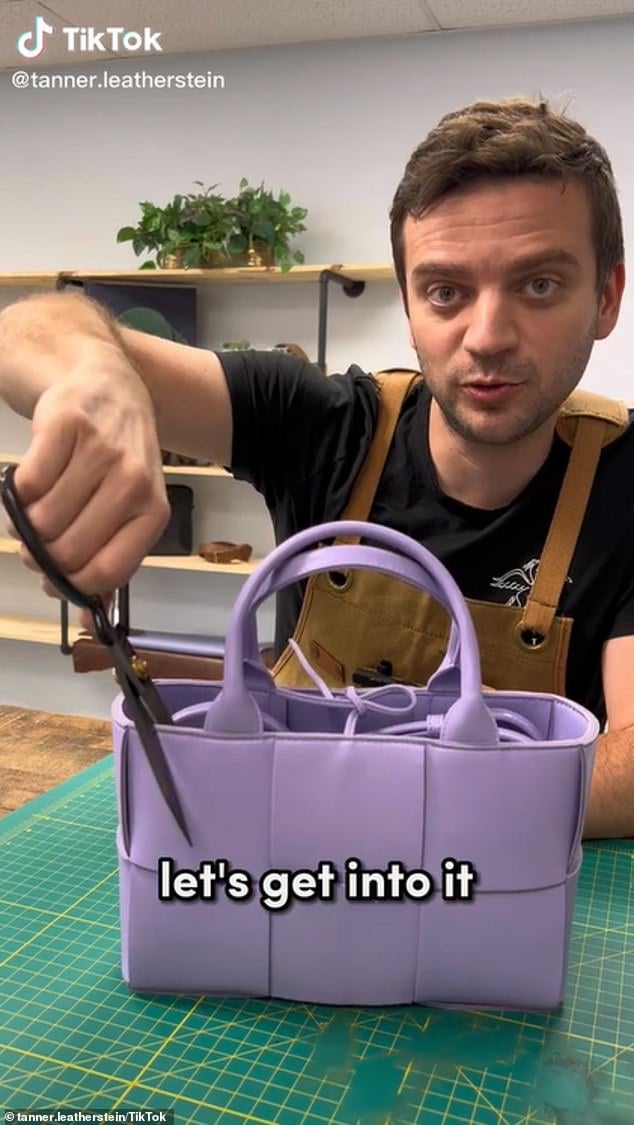

Read related:
US Hermès Price Increase 2023; Here are the New Prices
Breaking News: Global Chanel Price Increase 2023
Louis Vuitton Prices Are Going Up in 2023
The Viral Sister Duo Raising the Bar on the Global Fashion Scene: Snehal & Jyoti Babani
Updated: April 28th, 2023



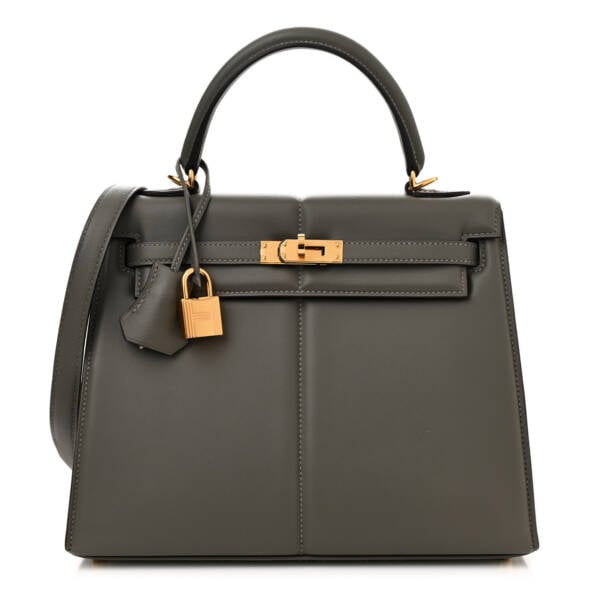
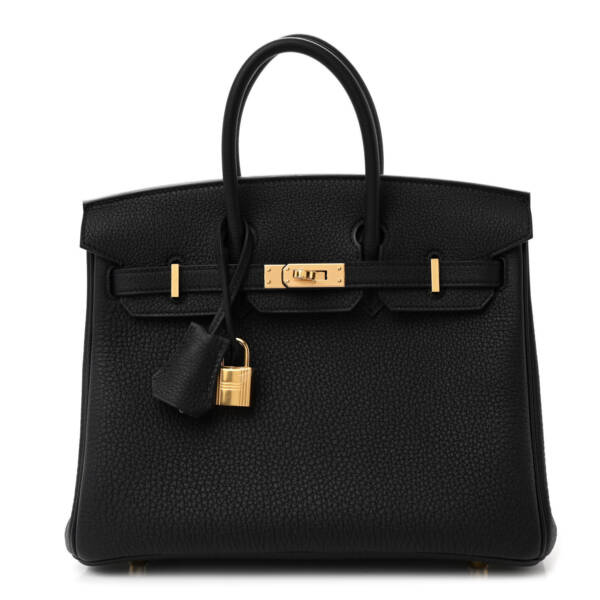
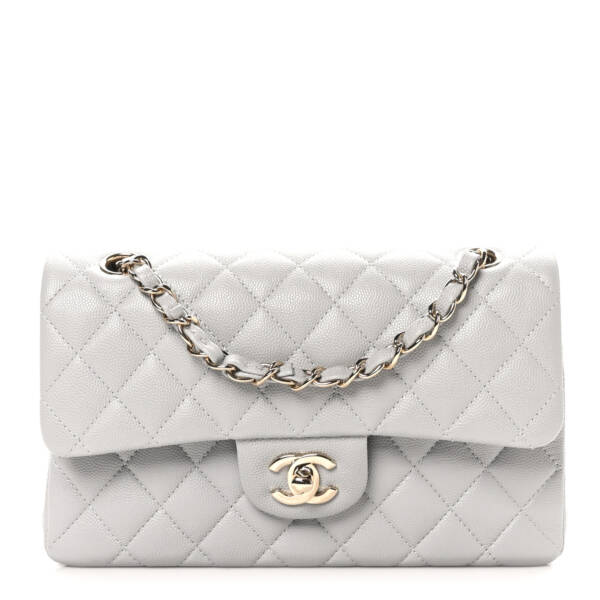
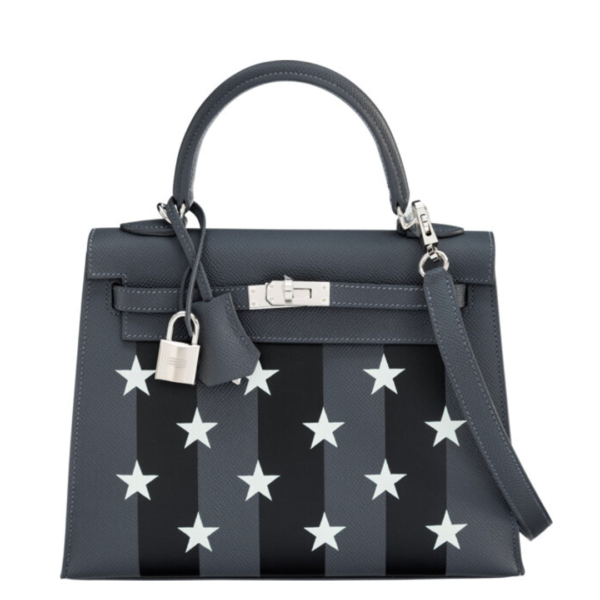
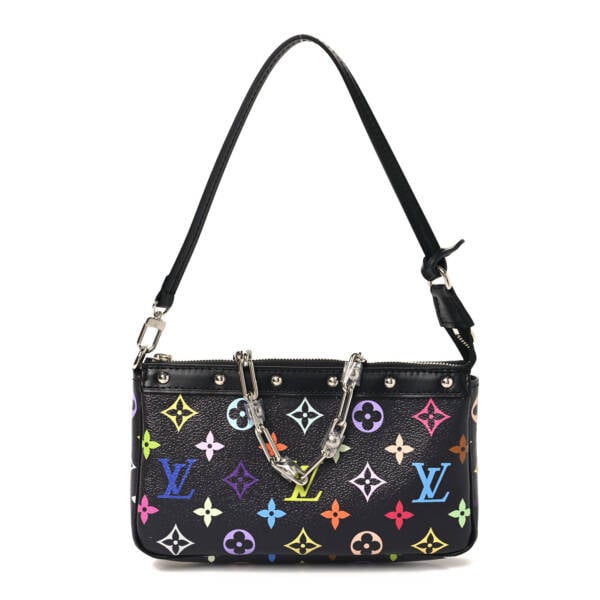
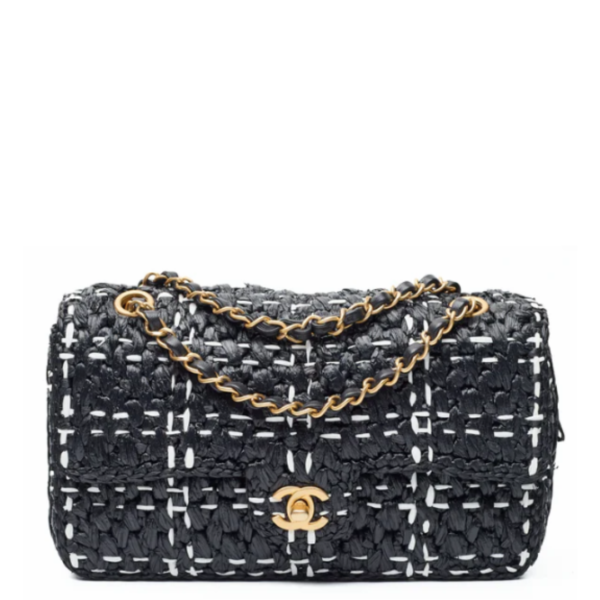
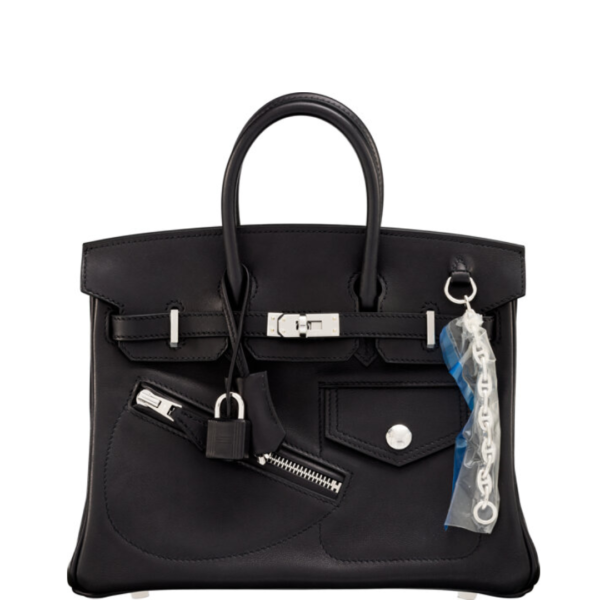
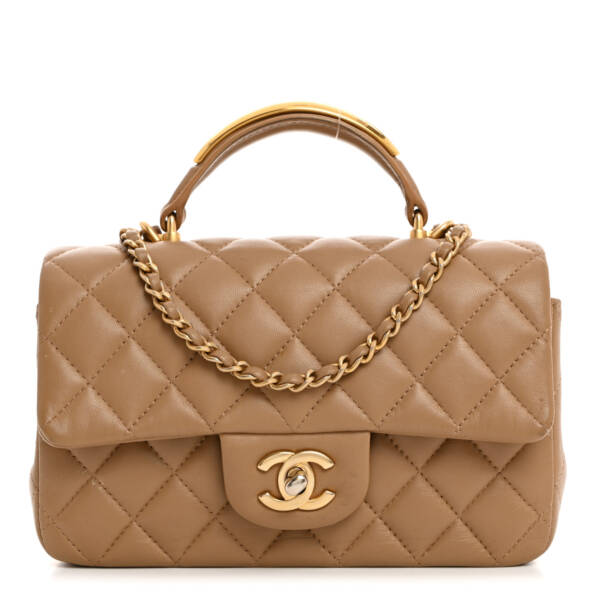
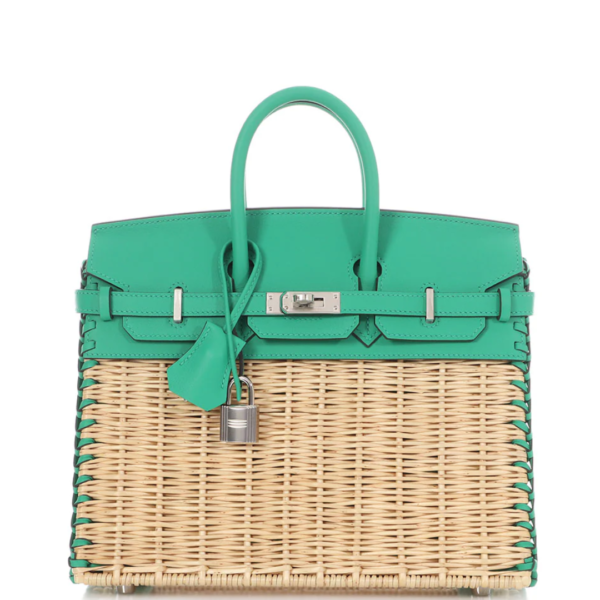
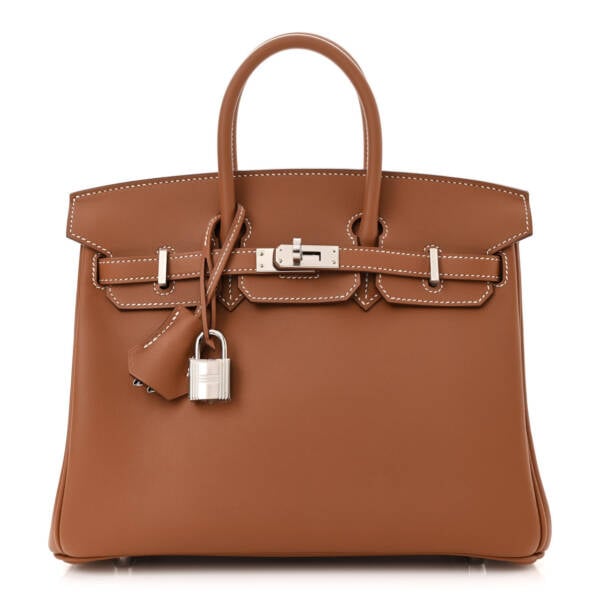

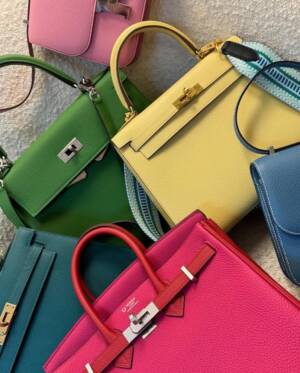
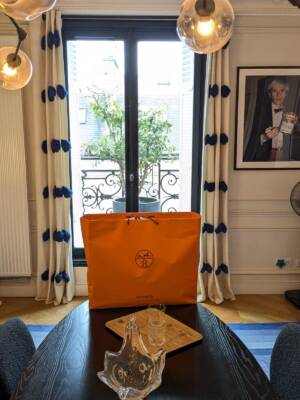

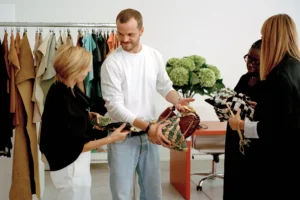
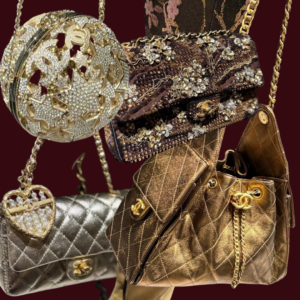


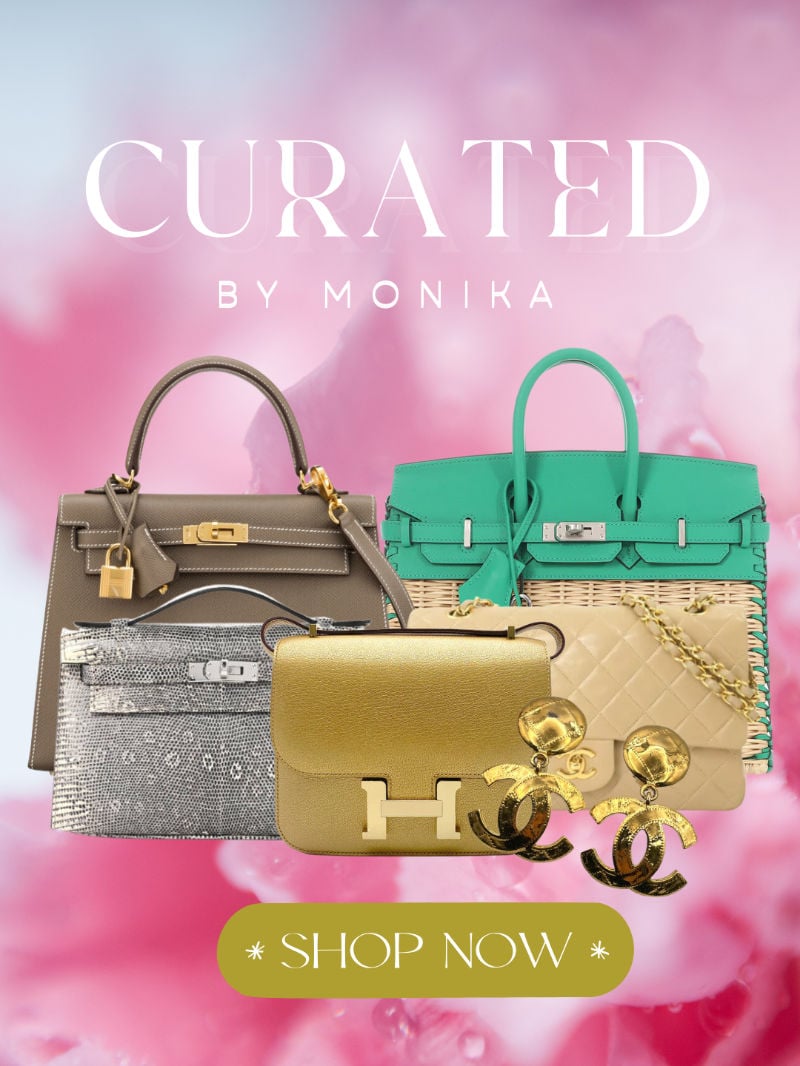
Comments
1 Responses to “Viral Star Tanner Leatherstein Tells You How Much Your Bag Should Really Cost”
While his estimates are designed to upset us on how much profit everyone is getting, there are other overhead costs that are not being factored into his estimates. Things like employee benefits, building costs, taxes, insurance, marketing, security, tools, heating, water, etc. will all add to the actual cost of a purse. These artists aren’t sitting in their living room making H bags. So maybe he could add to these costs as percentage based estimate of what those overhead costs might be and then give us a more accurate estimate of what a purse actually costs to make.